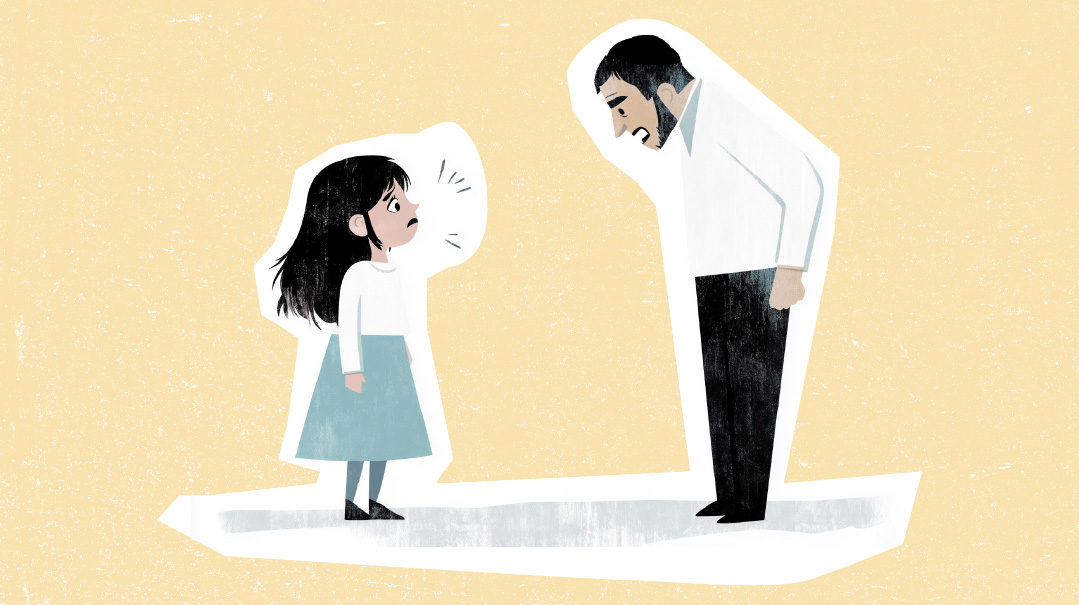Teaching Children to Manage Intense Negative Emotions

Keeping one’s lips firmly closed has a dampening effect on emergency chemistry

Q
How much can we expect children and teens to remain in control and behave appropriately while experiencing negative emotions like disappointment, anger, and frustration? How do we teach this skill to intense children who experience such emotions quite often? How do we help them to experience their emotions while at the same time regulating those feelings sufficiently enough that they can control their actions?
We might ask the same question concerning adults! It’s hard for everyone at every age to manage intense negative feelings. Emotions aren’t simple. They’re complicated, deep, powerful, and carry within them chemicals that flood our bloodstream. It’s this onslaught of urgent chemistry that affects our brains and almost simultaneously, our behavior. We react before we think.
Can we stop this process? Can we register our emotions while circumventing their chemical consequences? Can we teach our children to do it?
A
Hashem seems to think so. He has issued the commandment to refrain from hurting people’s feelings with words. Since we will normally be guilty of this offense when we’re insulted, displeased, or mad, it seems that Hashem expects us to be able to rein in our feelings and control our behavior, including speech and actions.
We know, too, that Hashem judges us according to how we manage our anger, particularly on the home front. While it’s hard to overcome the biological processes generated by our strong emotions, if Hashem asks it of us, we can be sure it’s possible. Certain factors, of course, create extra challenges: Fatigue, hunger, confusion, fear, health conditions, hormones, and yes, youth, all intensify the challenge. Nonetheless, difficulty doesn’t excuse us from the task.
The first step is to learn to pause. Keeping one’s lips firmly closed has a dampening effect on emergency chemistry. Teach your child to pause and close his lips. An open mouth allows oxygen to fuel the fire of adrenaline in the brain. A mouth that’s talking throws logs on the fire, growing the flames of emotion with every extra word. A shut mouth, on the other hand, deprives the fire of its fuel and the flames quickly die down. When lips are closed tightly, the chemicals, and then the feelings, are smothered and dampened.
However, they’re not extinguished. In their minimized state, they can actually be held and examined at leisure. Try it yourself: The next time a family member triggers you, quickly close your lips. Notice that you’ll still feel upset. Remove yourself from the situation so that you can spend a few moments with those upset feelings. With your mouth still closed, name as many of your feelings as possible. It’s especially powerful to do this while simultaneously tapping the eight meridian points delineated by the EFT (emotional freedom techniques) protocol.
Naming the feelings begins to safely release them. Ask yourself what you need or what might help you, and listen to the first answers that pop into your mind. The second step is to ask others for what you need or what would help. Now that your brain is calmer and working better, you can formulate the request for what you need so that it is most likely to be well received and lead to satisfactory results.
Teach your child to name his feelings to himself, while keeping his mouth closed. Then instruct him to ask the “helper” inside his head or heart what would help. Then, teach him how to ask for whatever he needs in a way that will increase the likelihood of getting it. Finally, practice all these steps with him over and over again. For instance, suppose a child is building something with Lego, and it isn’t going so well. He gets frustrated and knocks the blocks down. As he yells, “Dumb Lego,” he starts throwing the pieces.
You already taught this youngster all the steps involved in emotional regulation, so now, seeing that he’s “losing it,” you remind him to close his lips shut. You ask him to follow you out of the room. You ask him to think of the names of his feelings (e.g., mad, frustrated, upset). You ask him what he needs or what would help. He tells you he needs a hug. You provide it. You repeat this process every time his emotional upset leads to inappropriate behavior. In this way you’re teaching even a very young child that feelings are to be heard and addressed and that there is an appropriate way to do this. You’re teaching “emotional regulation.”
(Originally featured in Family First, Issue 868)
Oops! We could not locate your form.





